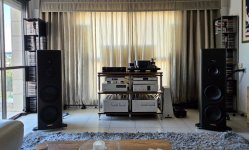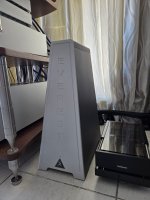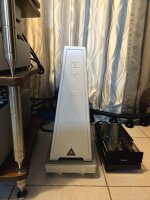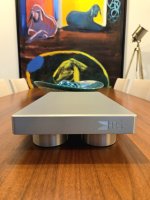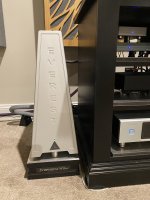- Thread Author
- #1
Last week, I upgraded and replaced the power distributor (Nordost QB8 Mk2) that had served my system for several years with a Shunyata Research Everest 8000 model, and also added a Shunyata Sigma CX cable between the wall outlet and the distributor itself. The result surprised me.
The first thing that jumps to the ear is the absolute silence in the background. It's not that my system ever suffered in this area, but here I'm talking about how the noise floor didn't just drop - it completely disappeared. This allows me to hear every small detail in recordings as if a filter I never knew existed has been removed. The tones and textures that were always there have improved further, and now the instruments stand out and sound clearer, with plenty of air (separation) between them.
In the dynamic range, the impact and feeling is that the system received a refresh and energy boost and operates effortlessly when transitioning from quiet passages to noisy and/or multi-instrument sections, all accompanied by tonal richness, organic sound, and an expansion of the soundstage width and depth.
In the lower range, the bass is tighter, more detailed (depth and layers), and more defined than ever. It's like rediscovering the low-end capabilities of the S5 all over again.
For me, upgrading to the Everest 8000 and Sigma CX didn't "just" address the power treatment issue; these are components that enabled the release of audio and music potential in my system.
The first thing that jumps to the ear is the absolute silence in the background. It's not that my system ever suffered in this area, but here I'm talking about how the noise floor didn't just drop - it completely disappeared. This allows me to hear every small detail in recordings as if a filter I never knew existed has been removed. The tones and textures that were always there have improved further, and now the instruments stand out and sound clearer, with plenty of air (separation) between them.
In the dynamic range, the impact and feeling is that the system received a refresh and energy boost and operates effortlessly when transitioning from quiet passages to noisy and/or multi-instrument sections, all accompanied by tonal richness, organic sound, and an expansion of the soundstage width and depth.
In the lower range, the bass is tighter, more detailed (depth and layers), and more defined than ever. It's like rediscovering the low-end capabilities of the S5 all over again.
For me, upgrading to the Everest 8000 and Sigma CX didn't "just" address the power treatment issue; these are components that enabled the release of audio and music potential in my system.

